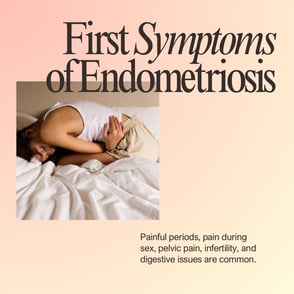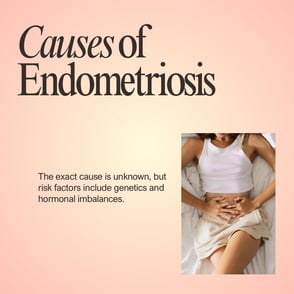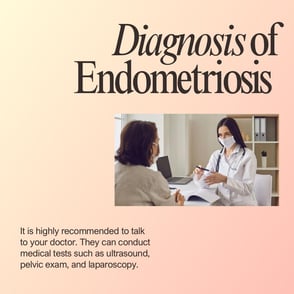Understanding Endometriosis: A Comprehensive Overview
Endometriosis is a chronic inflammatory condition characterized by endometrial-like tissue growing outside the uterus. Unlike normal endometrial tissue, these lesions can appear anywhere in the body, though they commonly affect reproductive organs, bladder, and colon. This misplaced tissue responds to hormonal changes, thickening and bleeding with each menstrual cycle, but with no way to exit the body, it becomes trapped, potentially leading to cyst formation, irritation, and adhesions.
5/1/20252 min read


Endometriosis is a chronic inflammatory condition characterized by endometrial-like tissue growing outside the uterus. Unlike normal endometrial tissue, these lesions can appear anywhere in the body, though they commonly affect reproductive organs, bladder, and colon. This misplaced tissue responds to hormonal changes, thickening and bleeding with each menstrual cycle, but with no way to exit the body, it becomes trapped, potentially leading to cyst formation, irritation, and adhesions.
Beyond "Painful Periods"
Contrary to common misconceptions, endometriosis isn't merely painful menstruation—it's a systemic, inflammatory disease that can be debilitating. Though its exact causes remain unclear and debated, research indicates multiple contributing factors. While primarily affecting individuals assigned female at birth (approximately 190 million worldwide), it has been documented in fewer than 20 cases involving cisgender men.
Recognizing Symptoms
Symptoms can begin at any age and may include:
Severe pelvic pain (often cyclical)
Painful menstruation requiring medication or limiting daily activities
Lower back and abdominal discomfort
Pain during or after sexual intercourse
Discomfort during bowel movements or urination
Heavy menstrual bleeding
Potential fertility challenges
Fatigue, digestive issues (diarrhea, constipation, bloating)
Nerve and muscular pain extending to legs, back, and sometimes shoulders
Many individuals experience these symptoms differently, and some may become accustomed to severe pain, believing it normal. Notably, these symptoms overlap with adenomyosis, where endometriotic lesions grow within the uterine muscle wall.
Classification and Types
Endometriosis is classified into four stages according to the American Society for Reproductive Medicine (ASRM):
Stage I (minimal): Few small lesions with minimal scarring
Stage II (mild): More numerous and deeper implants with some scarring
Stage III (moderate): Multiple deep implants, possible ovarian cysts, thick adhesions
Stage IV (severe): Widespread deep tissue involvement, large ovarian cysts, extensive adhesions
Four main types exist:
Superficial peritoneal endometriosis: Tissue attached to the peritoneum
Endometriomas: Dark fluid-filled "chocolate cysts" commonly on ovaries
Deep infiltrating endometriosis (DIE): Tissue invading organs within or outside the pelvis
Abdominal wall endometriosis: Growth on the abdominal wall, often at surgical sites
Potential Complications
While typically confined to the pelvis, approximately 12% of cases occur elsewhere. Complications may include:
Fertility issues and ectopic pregnancy risk
Organ obstruction or damage
Bladder and bowel dysfunction
Adhesions and ovarian cysts
Surgical complications
Severe anemia
Development of other chronic conditions
Rare manifestations include diaphragmatic endometriosis (affecting breathing) and extremely rare cerebral endometriosis.
Diagnosis Challenges
Diagnosis typically takes 7-10 years due to:
Varied or absent symptoms in many patients
Lack of awareness among healthcare providers
Normalization of menstrual pain
Absence of simple diagnostic methods
Definitive diagnosis requires laparoscopic surgery, though doctors may first perform pelvic exams, ultrasounds, or MRIs to exclude other conditions.
Treatment Approaches
Pain Management
Over-the-counter medications like paracetamol and NSAIDs for temporary relief
Hormone Therapy
Combined contraceptives (taken continuously)
Progestogens (pills, injections, or IUDs)
Gonadotrophin-releasing hormone analogues (GnRHa) for moderate to severe cases
Menopausal hormone therapy with caution for those in menopause
Non-Hormone and Non-Drug Options
Certain antidepressants affecting pain response
Pelvic floor physiotherapy
Cognitive behavioral therapy
Dietary modifications
Surgical Interventions
Laparoscopic removal of endometrial tissue
Hysterectomy in extreme cases, sometimes with removal of ovaries and tubes
Combined approaches using both surgery and hormone therapy
Living with Endometriosis
Endometriosis cannot be cured but can be managed. The significant diagnostic delay impacts quality of life across social, personal, and professional domains, often contributing to mental health challenges. Early detection may reduce long-term impacts and improve management strategies.
If you experience these symptoms, consult a healthcare provider promptly for evaluation and potential treatment.




